Along the way, you come across boards that have a number – these were mile markers (mileposts) that mentioned which mile of the highway you were on. We were on Parks Highway at mile 95. Mile 99 is where we took a diversion to Talkeetna, our destination city. The road is called the Talkeetna Spur Road – again we had mile numbers on this road. Mile 14 is where the air taxi providers operate from.
As per my research, there are some pullout points from mile 9 to mile 13 onwards where, if lucky, you could spot Mt. Denali – this is the tallest mountain in North America. We didn’t spot the pullovers, but then neither did we stop to investigate, since we wanted to get to the Talkeetna Air Taxi place first. They say that not everyone who comes to Alaska gets to see Mt. Denali, since the peak is often obscured due to the weather. Today was a sunny day, but there were fluffy white clouds around, not clear skies.
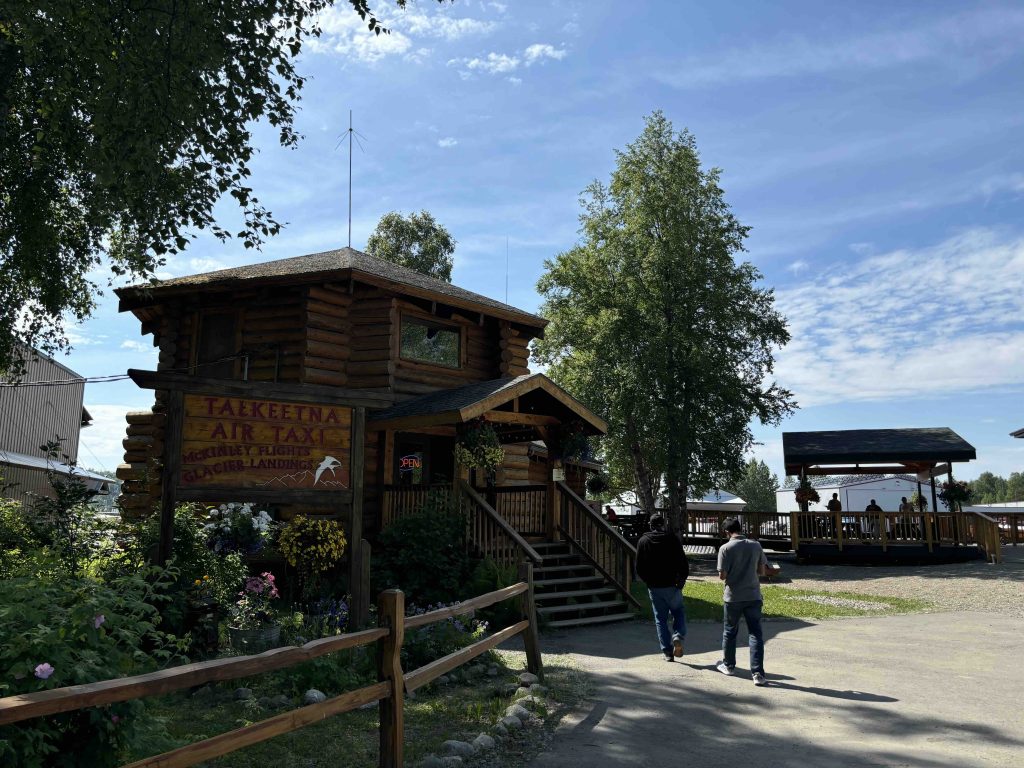
Mile 14 is where you had the air taxi services. We arrived at the place with a board that read ‘Talkeetna Air Taxi,’ the operator we had signed up with. There are a couple of others as well, all offering similar packages.
So the first thing they do is a check-in where they verify our booking and then take our weight.
The lady at the counter said, “Don’t worry, I won’t announce your weights.”
At least in our group, no one really would have cared if she did.
“Do put on everything that you’d be carrying with you on the flight.”
Raghav left his jacket in the car since it was pretty sunny. But she advised him to bring one, and he got it from the car.
“It’s about 40 minutes in the air and then 15 minutes on the glacier.” She provided a brief description of what we’d experience, including the weather and temperature today.
“You should be good with a jacket on the glacier.”
We were given a yellow card and told to proceed outside, where we could get our snowshoes. The card indicates which group you are in, the flight route you are taking, and whether your trip had a glacier landing.
“Don’t wait till your group is called to use the restroom. That’ll delay the flight. Make use of the restroom now itself while you wait.”
Beyond this check-in point was the tarmac; we could see a number of small flights, but first we had to get our snowshoes. There was a lady manning the stall, which had a selection in different sizes. Each of us got one; she showed us how to put it on, and we were all set – a sort of slip-on that you wear above your sneakers. I had heard of pollen allergies being common in the US – for the first time, I saw loads of the yellow specks floating in the air, almost like a thick cover of dust floating around!
We noticed that the flights stationed on the tarmac had wheels, but they also had glides beside the wheels.
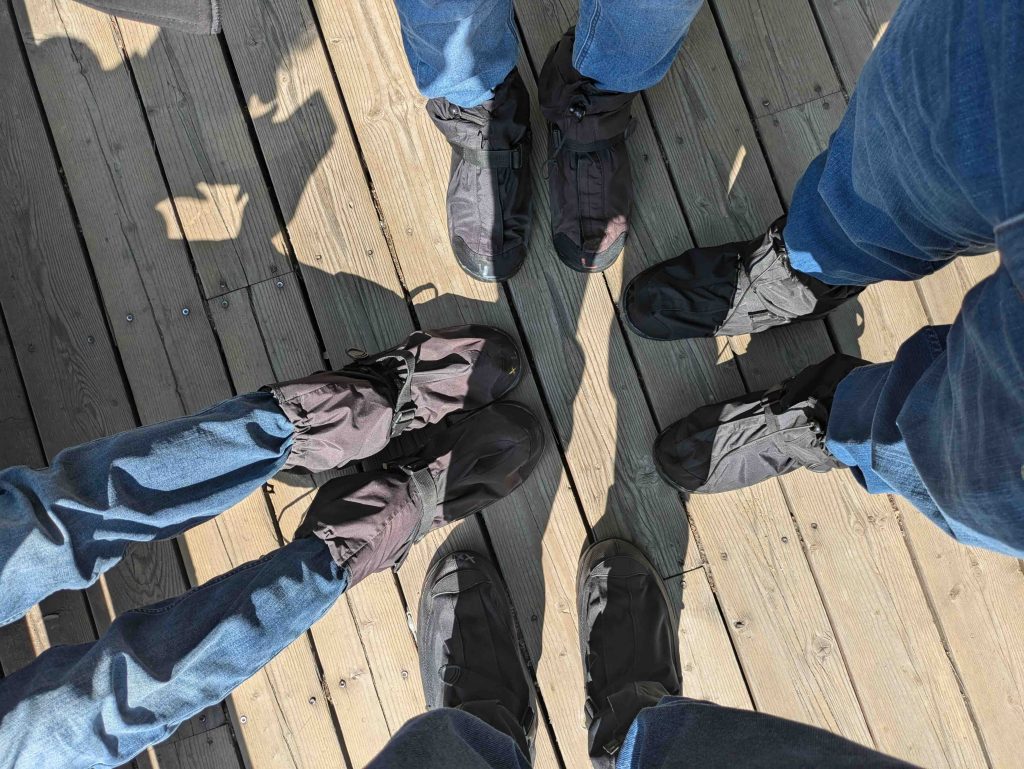
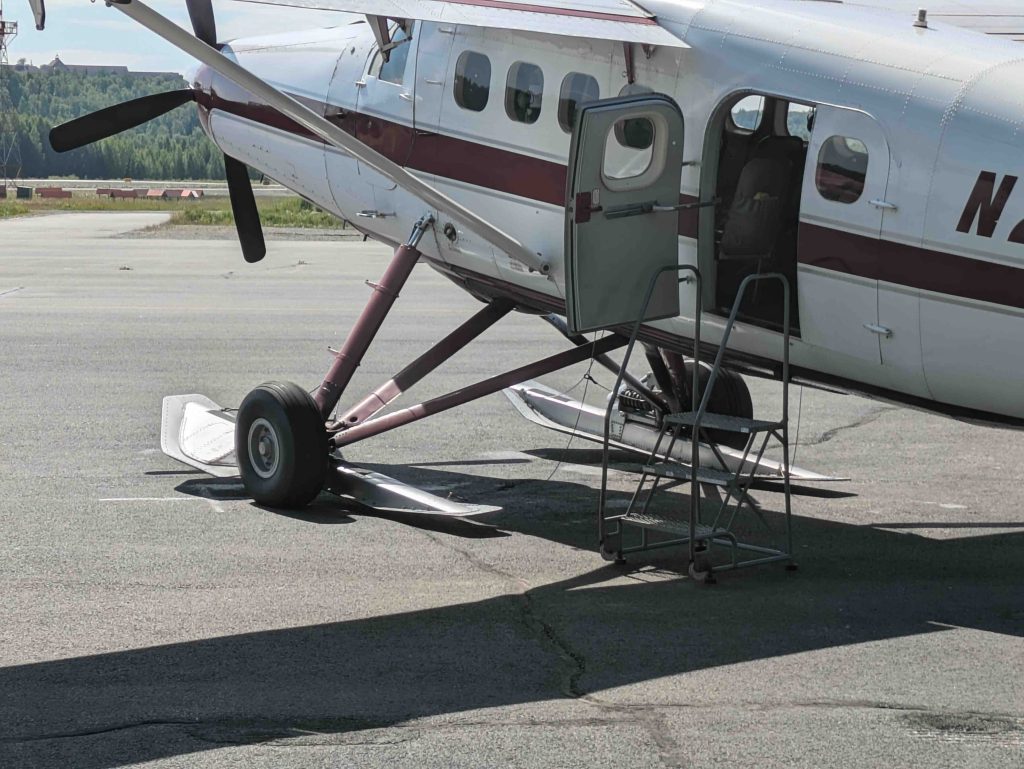
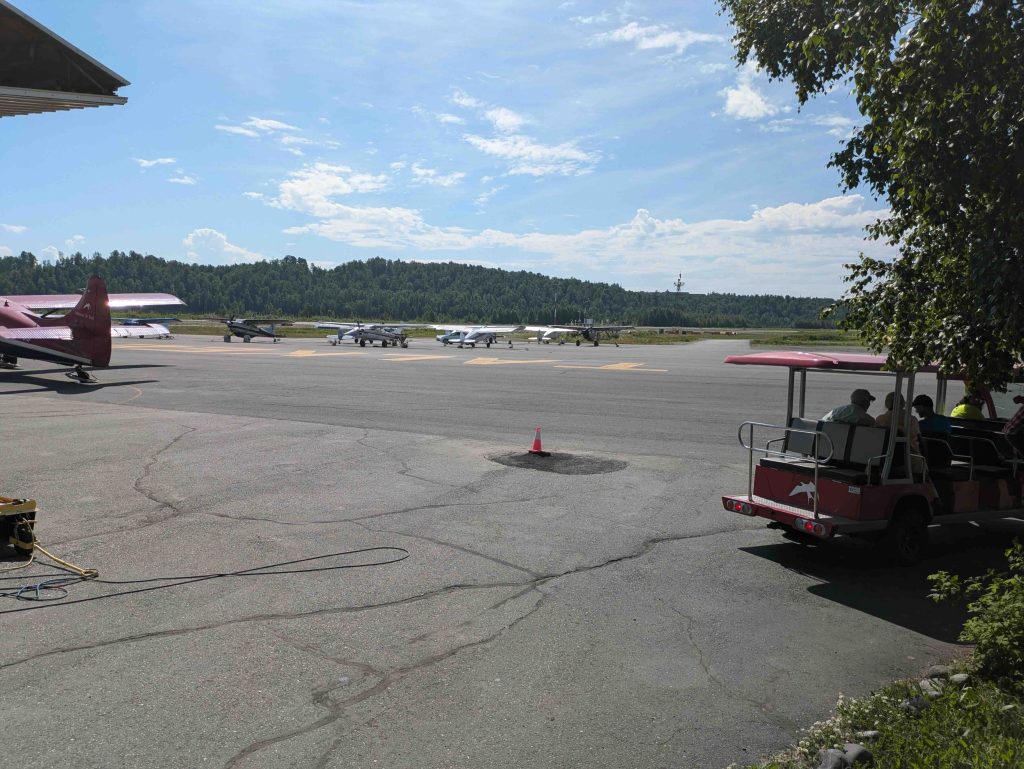
It was time, and the young captain called our group around 1 pm – checked our card colours and took us close to our aeroplane.
“Do you all have mobile phones?”
So tuned we were that instinctively people started pulling out their phones to switch it to airplane mode, but he said, “Don’t worry – I won’t ask you to turn it off; it doesn’t bother my instruments!”
He gave a quick overview.
“Every seat has a headset. It’s a one-way communication – so you can hear what I say, but I won’t hear you through that. That would make it hard for me to focus on other communications going on while we fly.”
You obviously want window-side seats for this trip. “All seats are window side,” he announced.
“Who wants to get in first?”
Since seating didn’t matter, I just hung around to be the last one in.
“Good for you, you have the last seat, which has the maximum leg room,” he said, as I climbed up the short ladder.
He got in after me and shut the door. There was a row of single-seaters on both sides of the flight; 12 passengers could sit, along with the captain and assistant, in the cockpit.
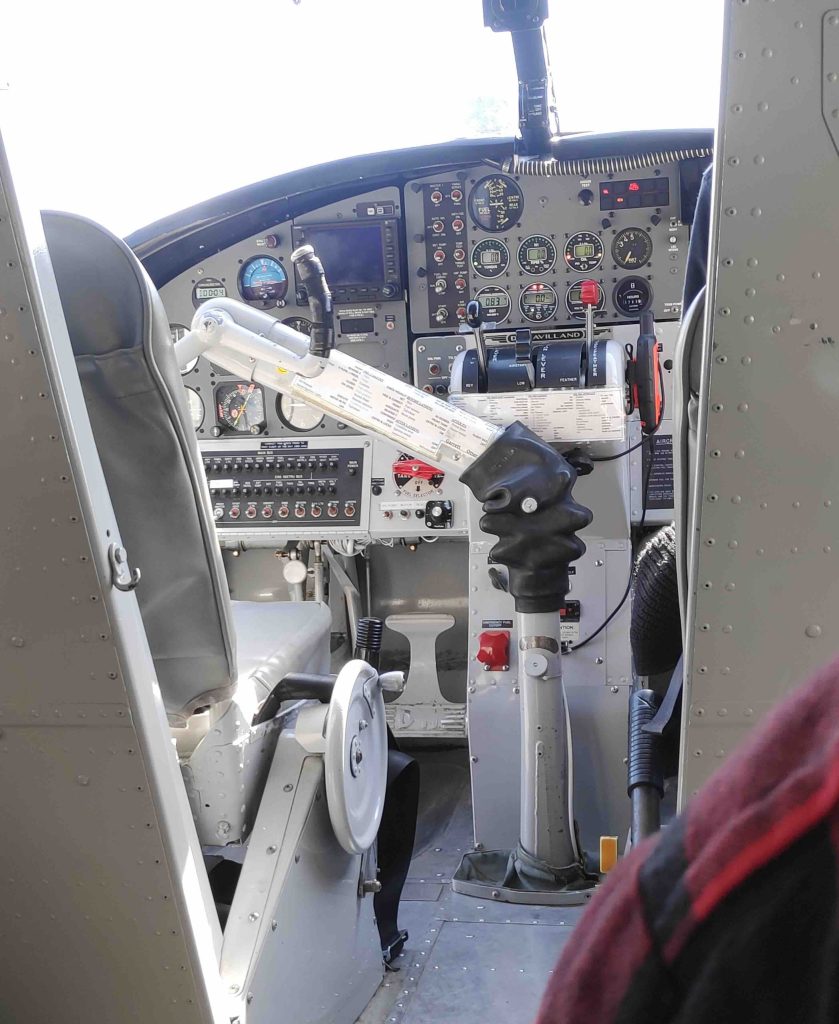
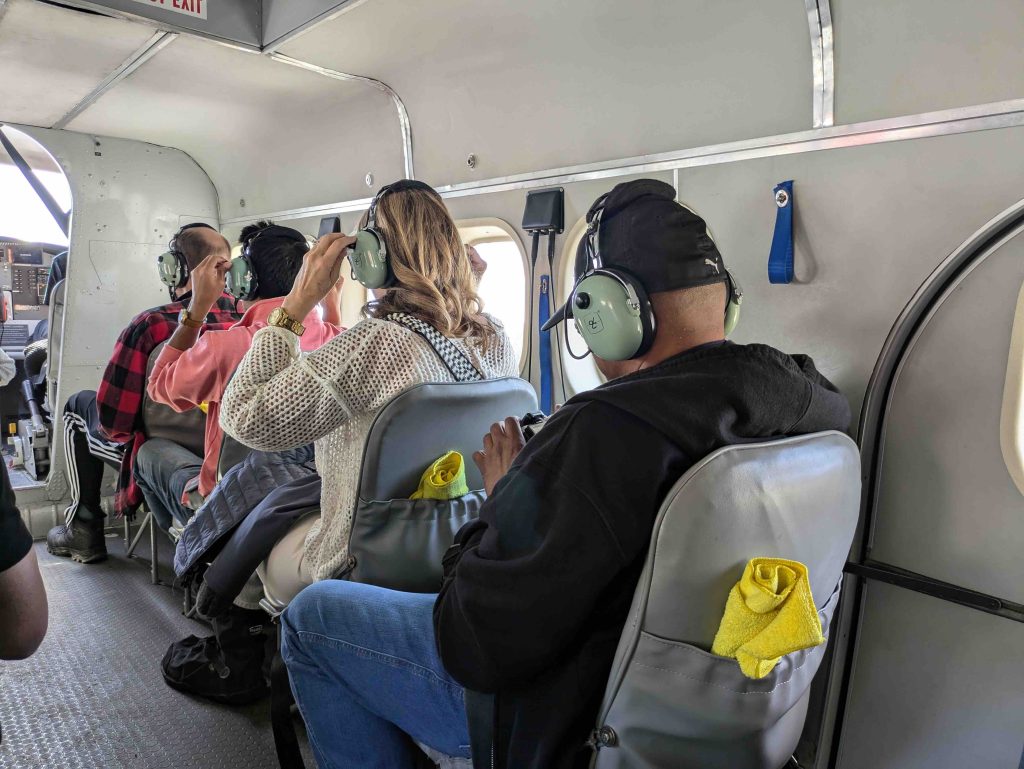
Once in, he tested the headsets to check that all of us could hear. There is also a volume control knob on it.
“We’ll wait for a gap to take off.”
Flights were landing and taking off periodically, and as we waited, we could see one take off just before us. We were soon in the air and crossing the Talkeetna River.
The captain gave a running commentary as we flew past areas.
“Talkeetna is a place where 3 rivers meet – Talkeetna river, Susitna river and the Chulitna.”
If you trace the Talkeetna River on the map, it flows into the Susitna, which runs all the way down the state into the Cook Inlet, which connects to the Gulf of Alaska, a part of the Pacific Ocean.
We crossed the water bodies, plains and swamps.
The captain explained about Dall sheep, which were important for Alaskan natives.
Some folks may find the view gets a little monotonous because from the height we were in, the flat terrain seems to look the same – you are just seeing water, sand and some greenery way below. Rakesh dozed off in a few minutes!
The captain announced our elevation as he steered the flight upwards. I woke up Rakesh as we headed into the mountain range.
“At 12000 feet and beyond is when an oxygen mask is required.”
There is the highest flight package that takes you around the peak of Denali, where it was mentioned that oxygen masks will be provided.
“The glaciers are at 4000 to 5000 feet above sea level. The mountains you see near are around 5000 feet higher. And then there is Denali, whose peak is at 20000 feet. No landing is possible there, but 17000 feet is where the highest possible landing was done. On a clear day, you can view the peak from the glaciers.”
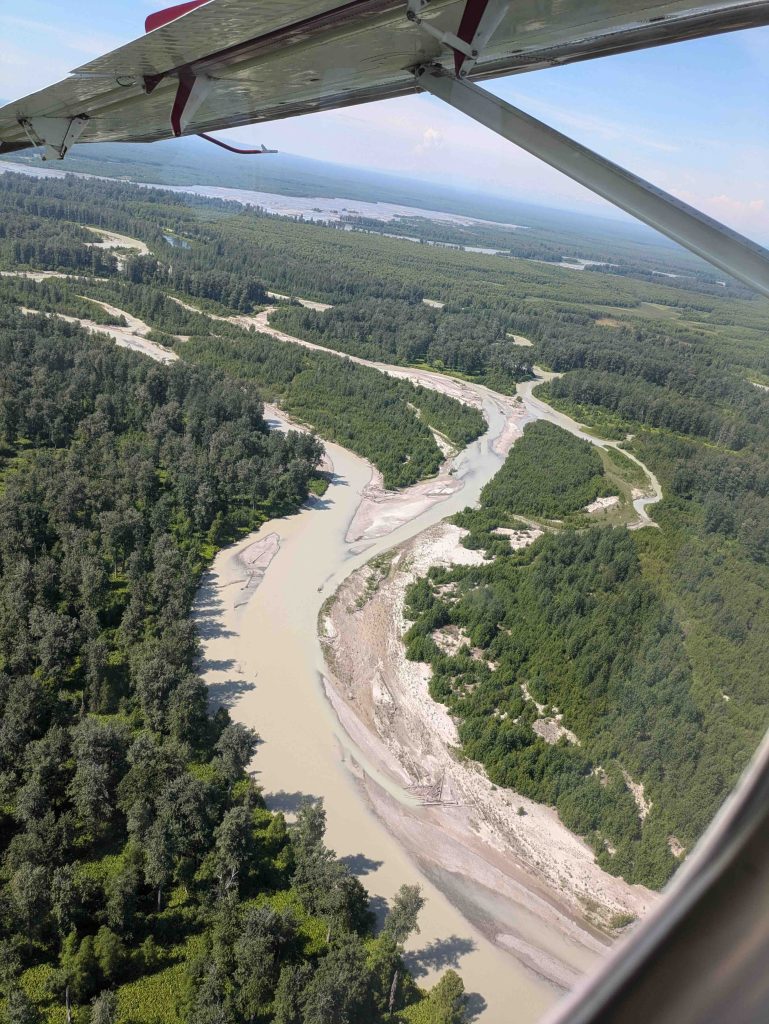
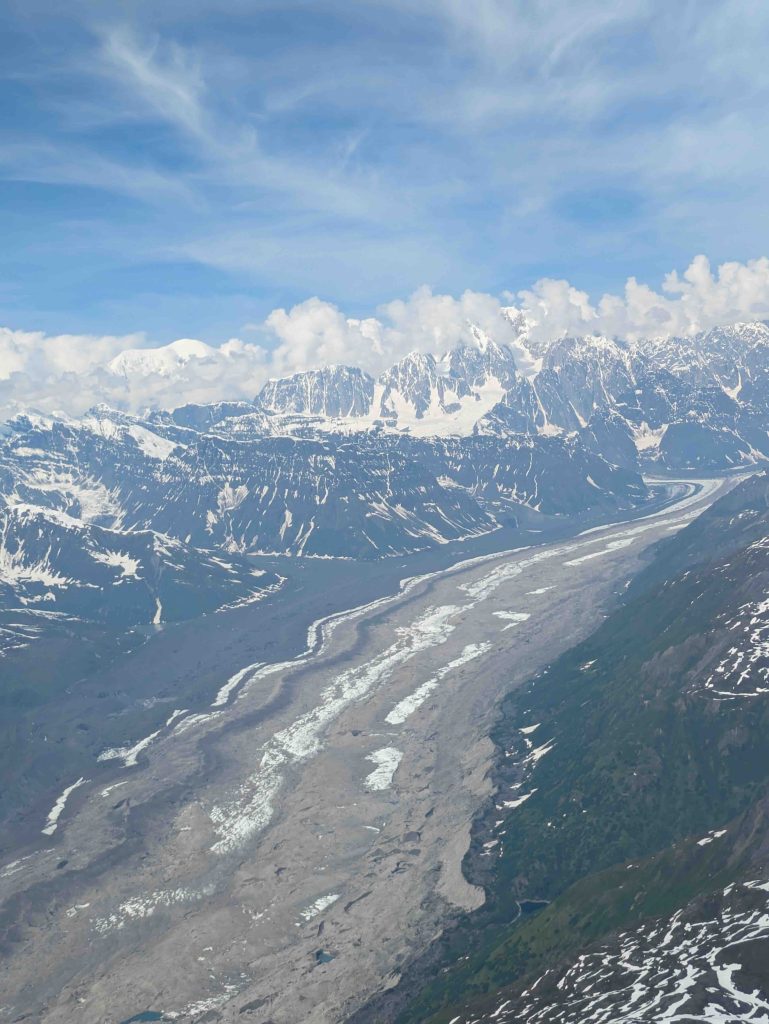
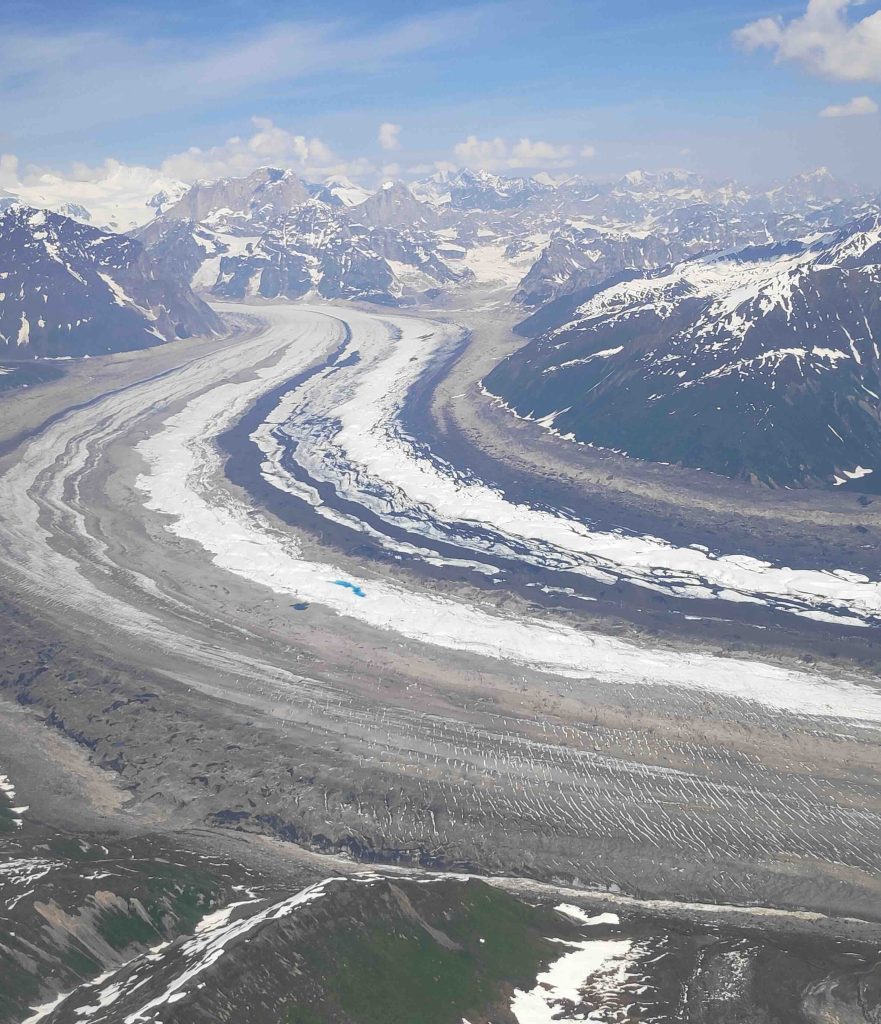
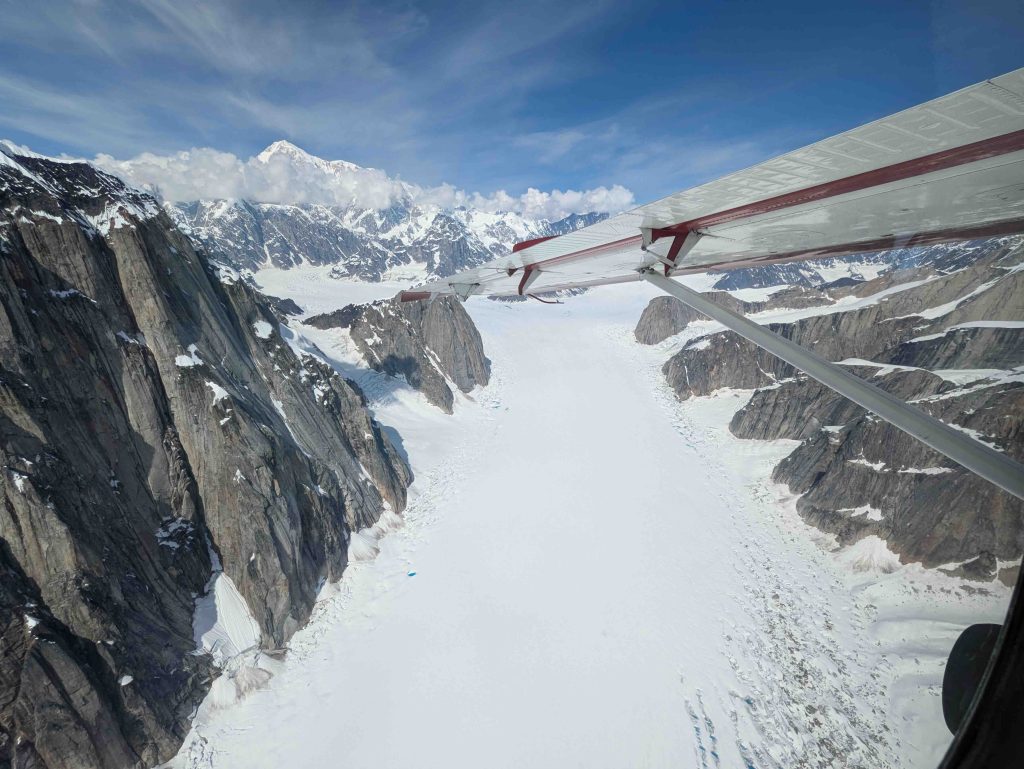
We sort of got close to a height of 12,000 feet; Alaska has 17 of the 20 highest peaks in the USA!
There were a few glaciers that the captain pointed out. He’d tilt the flight towards one side so that the passengers on that side would have a good view and promise that on the return leg he’d tilt the other way to give the passengers on the other side the same view. The captain also called out a couple of mountains – one was Mt. Hunter, whose peak was at 14000 feet.
We entered a gorge that the captain said is the Great Gorge of Ruth Glacier.
“Either side of the gorge are granite cliffs, and we’ll be landing on the glacier.”
It was an impressive sight – we were in the clouds, with a blue sky, looking down at the steep, brown, rugged walls, which were interspersed with plenty of white snow.